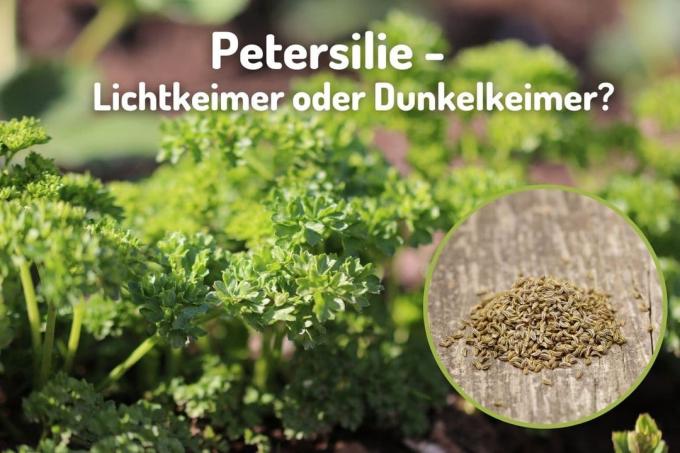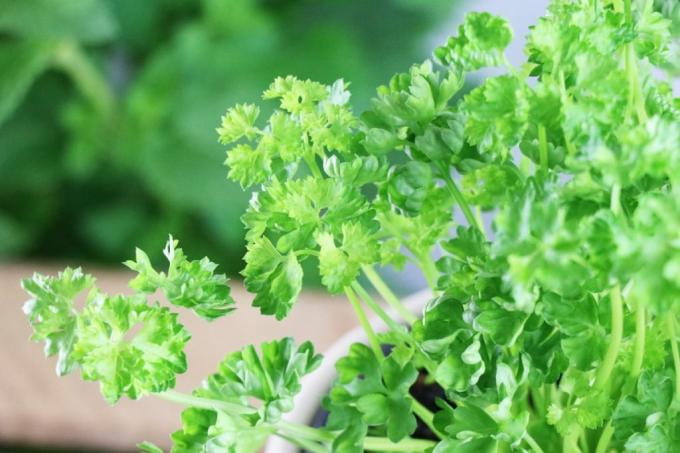
table of contents
- What are light germs?
- What are dark germs?
- Parsley - light germinator or dark germinator?
- frequently asked Questions
Parsley is one of the most popular herbs. Whether you can successfully grow your own parsley yourself depends on how your seeds are classified in light or dark germs.
In a nutshell
- Differentiation between light and dark germs when sowing seeds
- Light germs need direct light to grow and are sown on the surface of the earth
- Dark germs prefer short-wave light and are planted in the ground
- Parsley belongs to the group of dark germs
What are light germs?
Plants whose seeds require direct light with high intensity for successful germination are called light germinators. Light germs can be identified by the following indicators:
- very small and light seeds
- direct sowing of the seeds on the surface of the earth
- Seed is not resp. only slightly covered with earth
- covering soil layer may be max. correspond to the size of the seed
- Examples of light germinating plants: basil, Dill, garden cress

Note: When sowing, the seeds of light germs should be pressed lightly onto moistened soil, otherwise the seeds can easily be washed away by irrigation water or when it rains.
What are dark germs?
Dark germs are plants whose seeds only germinate in sufficient darkness. In contrast to light germs, direct light radiation has a growth-inhibiting effect on dark germs, the seeds require short-wave, blue light. The seeds of dark germs are characterized by the following characteristics:
- large and thick seeds
- Cover the seeds with a layer of earth
- Soil layer is about two to three times as thick as the seed is large
- Examples of dark germs: lamb's lettuce, cucumber, Chives

Parsley - light germinator or dark germinator?
Biologically, parsley belongs to the dark germ group. Your seeds should therefore be covered with a thick layer of soil when sowing. Ideally, the seeds are sown in a light, but protected from direct sunlight spot in loose, humus-rich soil. In the partial shade, however, the plant grows more slowly.

tip: Plant the seeds of the parsley about 1.5 cm; but a maximum of 3 cm deep into the ground.
frequently asked Questions
Yes, in addition to the light and dark germs, there are also light-neutral germs that do not make any specific demands on the lighting conditions. Sunflowers are one of them.
Parsley can be grown in pots from February to August, parsley can be sown outdoors as soon as the temperatures are constantly above eight degrees Celcius, which is around March / April is equivalent to.
The germination time of the parsley is between 15 and 25 days.
